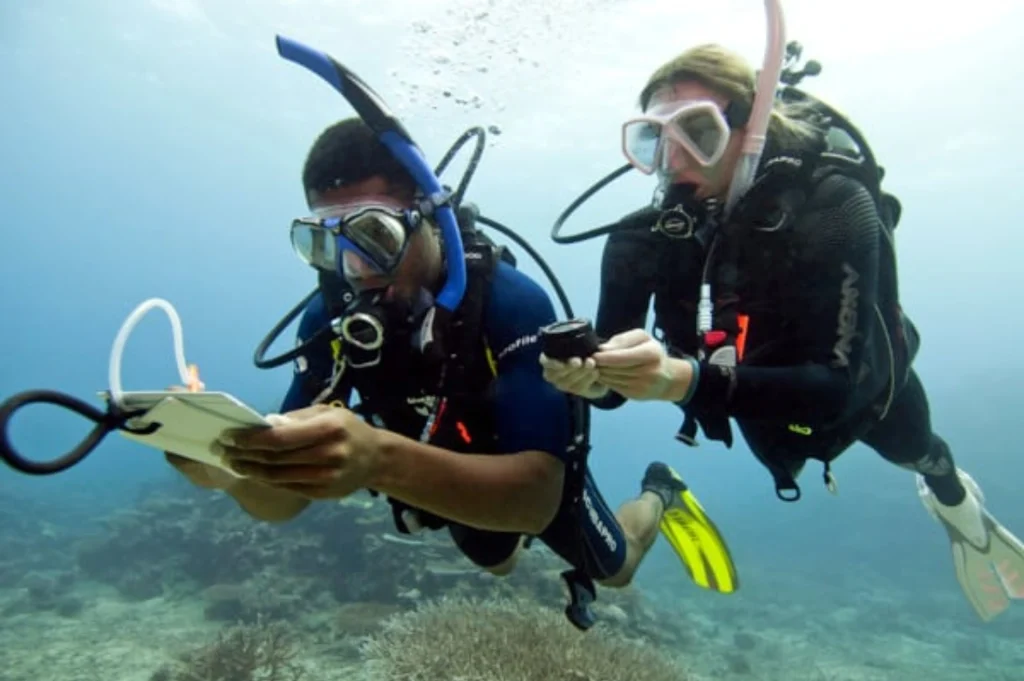Losing orientation underwater can be an anxiety-inducing situation, even for experienced divers. The lack of clear visual references, poor visibility, and the vastness of the underwater environment can all contribute to this disorientation. In this practical guide, you will learn key techniques to regain underwater orientation and enjoy a safe dive.
Stay calm and assess the situation
If you ever feel disoriented, the first thing to do is stop, take a deep breath, and avoid panic. Staying calm is essential for making the right decisions and conserving your tank’s air supply.
Use Your Dive Compass
A compass is an essential tool for underwater navigation. Before the dive, set a course and check it periodically to ensure you are following the planned direction. If you become disoriented, the compass will help you get back on track.
Look for Natural References
Observe the environment for distinctive features such as rock formations, corals, or changes in the seabed. These references can help you regain underwater orientation and recognize familiar areas.
Monitor Your Depth
Use your depth gauge to check if you have ascended or descended unintentionally. Maintaining a constant depth will help you keep your orientation underwater and avoid potential risks associated with sudden depth changes.
Communicate with Your Buddy
Communication with your dive buddy is vital. If you feel lost or disoriented, use the agreed-upon signals to inform your buddy and work together to regain underwater orientation.
Avoid Sudden Movements
Make smooth and controlled movements. Sudden movements can increase disorientation and gas consumption.
Consider the Possibility of Vertigo
Sometimes, underwater disorientation can be accompanied by vertigo. If you experience this sensation, stop, take control, and focus on your breathing until it passes. If the vertigo persists, it’s advisable to safely end the dive.
Continuous Training
Taking underwater navigation courses and regularly practicing with your compass will improve your underwater orientation skills, reducing the chances of getting disoriented.
Pre-Dive Planning
Before each dive, study the site, establish reference points, and make a dive plan with your buddy. Defining emergency procedures in case of disorientation while diving is key to a safe and enjoyable dive.
Explore with Spot Diving!
At Spot Diving Cartagena, we specialize in providing safe diving experiences. Our highly trained instructors will guide you through every dive, ensuring you enjoy the most while learning essential underwater orientation techniques. Contact us and dive into an unforgettable adventure.
- Learn more about Underwater navigation techniques at PADI and discover additional tips at DAN Europe. ;
- Discover more about our courses at Spot Diving Cartagena Learn more here

